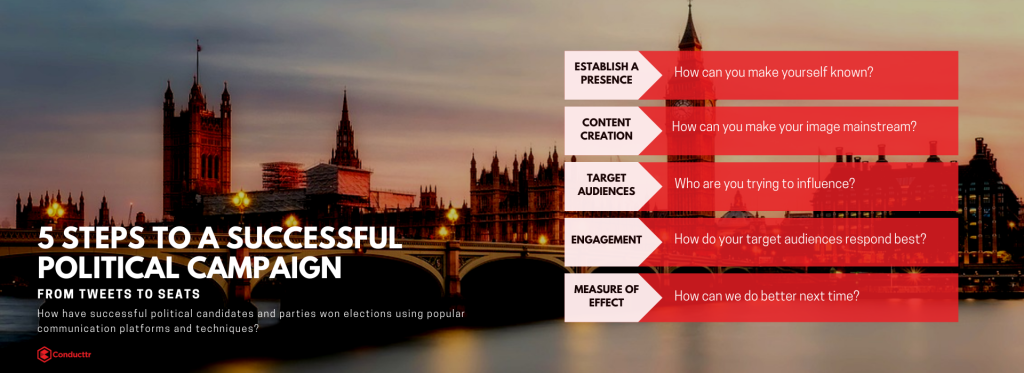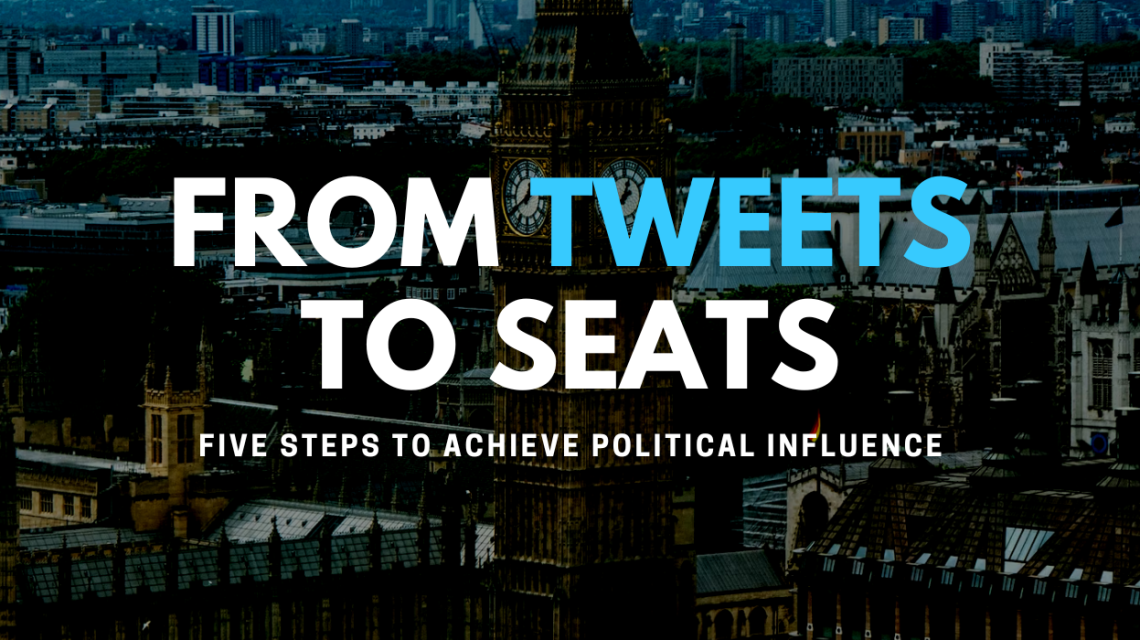Social media has become an integral part of modern political campaigns, allowing political parties to reach millions of voters with the click of a button. From establishing a digital footprint to targeted advertising and community building, political parties are leveraging the power of social media to shape public opinion and influence elections. In this article, we take a closer look at how political parties use information operations to gain an edge in the race for national leadership.

Establishing a Social Media Presence: Where do you want to be seen?
Barack Obama was the first US president to embrace social media as a way to connect with young voters. During his 2008 campaign, he created a strong online presence through Facebook, Twitter, and YouTube. He used these platforms to communicate with voters, sharing his thoughts, plans, and vision for the future. Obama also hosted online Q&A sessions, allowing young people to ask him questions and get to know him on a more personal level. This strategy helped him to reach millions of young voters and engage with them in a way that was relevant to their lives.
Obama’s social media presence was also seen as a way for him to showcase his youthfulness and tech-savviness, which further endeared him to younger voters. Through his use of social media, Obama was able to mobilize young voters and secure a historic victory in the 2008 election. He set a new standard for political engagement through social media, inspiring other politicians to follow suit.
Content Creation: What do you want people to see?
The “Make America Great Again” campaign was a political slogan used by Donald Trump during his 2016 presidential campaign. It resonated with millions of Americans who felt frustrated with the state of the US. The slogan played on nostalgia for a time when many felt the country was stronger and more prosperous. It became a symbol of resistance against the political establishment and the perceived failures of the administration, giving voice to the frustrations of Americans who felt left behind by the political and economic systems.
The slogan became a part of popular culture and solidified Trump’s support base. The polarization also played a role, serving as a contrast to the views and policies of the Democrats. The ‘MAGA’ campaign was successful due to tapping into the desires and frustrations of the population, its cultural impact, and its clear contrast to the political establishment at the time.
Targeting Content: Who are you trying to influence?
The 2010 UK General Election marked a turning point in political campaigning with the Conservative Party utilizing data analysis to gain a competitive edge. By targeting swing voters, they used advanced technology to identify and engage with them, delivering tailored messages that resonated with their interests, values, and political views. Through social media and online ads, the party reached voters in a new and effective manner, setting a new standard for future elections.
The use of data analysis demonstrates the power of technology in shaping election outcomes. Targeting key swing voters with relevant messages, the party was able to win their support and secure their victory. This marks a significant shift in the way political campaigns run and is sure to be imitated in the future.
The Conservative Party’s innovative approach to political campaigning set a precedent for future elections, highlighting the importance of data analysis and technology in shaping the outcome. By using these tools to deliver targeted messages, they were able to manage reputation, gain a competitive advantage and secure their victory.
Engagement: How are you going to secure their vote?
Jacinda Ardern won the political election in New Zealand with a strategy of engagement. She aimed to connect with voters and build trust. Ardern is known for her warm and caring personality. This allowed her to connect with people from all walks of life. During her campaign, she held many town hall meetings and public events where she listened to voters’ concerns. Ardern also used social media to engage with the public and share her vision for the country. Her approach to engagement was seen as genuine and helped her build a strong following.
Ardern focused on important policy issues like child poverty and mental health. This resonated with many New Zealanders and secured their support. Ardern wanted to make a positive impact on the lives of New Zealanders. This commitment helped her win the election and become the youngest female Prime Minister in the country’s history.
Ardern’s success shows the power of engagement in political campaigns. By connecting with voters, Ardern was able to build trust and secure support. Her approach was genuine and focused on the issues that mattered most to New Zealanders. The success of her campaign sets a standard for future political campaigns and demonstrates the importance of engagement (physically and virtually) in winning elections.
Measuring Effect: How can we do better?
Political parties and politicians use various methods to evaluate the success of their campaigns. Public opinion polls are one way to gauge the public’s views on a specific issue or candidate. These surveys can show how effective a campaign has been in changing public opinion. Voter surveys focus on getting opinions and behaviors of voters, and political parties use this information to understand their target audience. Election results provide a clear indication of a political campaign’s effectiveness. A party that performs better than expected had a successful campaign, while a party that performs worse may need to re-evaluate its strategy.
Again, the 2012 US Presidential campaign of Barack Obama is an example of a campaign that adjusted to become more successful. The Obama team realized they were not reaching younger voters through traditional media, so they launched a targeted digital campaign that included social media outreach and targeted online advertising. This campaign was successful and changed the way digital marketing is used in political campaigns.
Conclusion
A successful political campaign requires a strategic and comprehensive approach. The key components of a winning campaign include establishing a strong online presence through relevant social media platforms, creating content that resonates with the target audience, and delivering tailored messages. Engagement with the public through public events and social media is also critical in building trust and support. A focus on the issues that matter most to the target audience can increase the effectiveness of the campaign. Regular evaluation of campaign success through public opinion polls, voter surveys, and election results can help to ensure that the campaign stays on track and achieves its desired outcome. By continuously monitoring and adjusting the campaign strategy, a political candidate can increase their chances of success and achieve their goals. With the right approach and a focus on the needs of the target audience, a winning political campaign can be created.
_______________________________________________________________
Use Conducttr’s crisis exercising platform to simulate your strategic communications in a closed private environment. Test and adjust your communication plan using our analytics and see if you have what it takes to be a successful political campaign strategist.



 Fortifying Elections: Understanding and Preparing for Interference
Fortifying Elections: Understanding and Preparing for Interference  Training Cyber Terrorism Professionals
Training Cyber Terrorism Professionals  Precision Strike in Cognitive Domain Operations
Precision Strike in Cognitive Domain Operations  Nein, Russland! Germany’s Leopard II-shaped message to Putin
Nein, Russland! Germany’s Leopard II-shaped message to Putin  MonkeyPox wargame – influence operations simulation
MonkeyPox wargame – influence operations simulation  Elastic Worlds
Elastic Worlds